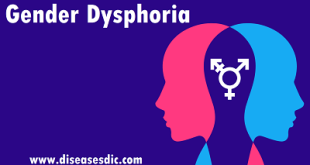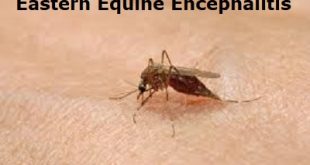Description
Excoriation disorder (also referred to as chronic skin-picking or dermatillomania) is a mental illness related to obsessive-compulsive disorder. It is characterized by repeated picking at one’s own skin which results in skin lesions and causes significant disruption in one’s life.
Individuals may pick at the healthy skin, minor skin irregularities (e.g., pimples or calluses), lesions, or scabs. This disorder is usually chronic, with periods of remission alternating with periods of greater symptom intensity. If untreated, skin-picking behaviors may come and go for weeks, months, or years at a time. It is common for individuals with this disorder to spend significant amounts of time, sometimes even several hours a day, on their picking behavior.
The most common picking sites are the face, back, neck, scalp, ears, chest, cuticles, arms, and legs. Most people report using their fingers or fingernails to scratch or squeeze their skin, while 52% also report using implements (e.g. pins, tweezers) to assist their picking.
Occasional picking at cuticles, acne, scabs, calluses or other skin irregularities is a very common human behavior; however, research indicates that 2% – 5% of the population picks their skin to the extent that it causes noticeable tissue damage and marked distress or impairment in daily functioning. 75% of people affected are female. The behavior typically begins in early adolescence, although skin picking disorder can begin at any age. Without treatment, skin picking disorder tends to be a chronic condition that may wax and wane over time.
Pathophysiology of Excoriation Disorder
Skin picking disorder happens in both children and adults. It can begin at almost any age. Skin picking disorder often develops in one of two ways:
- After some kind of rash, skin infection, or small injury. You may pick at the scab or rash, which causes more injury to the skin and keeps the wound from healing. More itching leads to more picking and more scabbing, and the cycle continues.
- During a time of stress. You may absently pick at a scab or the skin around your nails and find that the repetitive action helps to relieve stress. It then becomes a habit. Skin picking disorder is considered a type of repetitive “self-grooming” behavior called “Body-Focused Repetitive Behavior” (BFRB). Other types of BFRBs include pulling or picking of the hair or nails that damage the body.
It is classified in the DSM-V (a compendium of psychiatric diagnoses) as a type of obsessive-compulsive disorder because of the compulsive urge to perform repetitive behaviors.
Causes of Excoriation Disorder
As with many mental illnesses, scientists and mental health professionals suspect that the causes of OCD skin picking may involve a combination of biological and environmental factors, which could include:
- Genetic predisposition – those with first-degree relatives who are suffering or have suffered from skin picking or another body focused repetitive disorder are at greater risk of developing the condition.
- Environmental triggers – a person’s family environment and childhood experience may influence who develops the disorder. Perfectionism in the family, physical violence, emotional abuse, and other trauma may trigger skin picking behavior.
Before diagnosing a person with skin picking OCD, doctors need to rule out other causes. For example, certain drugs like amphetamines (often prescribed for ADHD) can cause OCD skin picking. Kidney disease, iron deficiency anemia, scabies, and a number of other health issues can cause skin picking as well.
A physician will need to test patients for these other medical causes of skin picking before diagnosing them with skin picking OCD
What can be the risk factors?
- Children who have obsessive-compulsive disorder, or who have first-degree family members with OCD, are more likely to develop the disorder.
- Girls are also more at risk.
How to recognize the symptoms?
Most people pick at their skin from time to time, but you may have skin picking disorder if you:
- Can’t stop picking your skin
- Cause cuts, bleeding or bruising by picking your skin
- Pick moles, freckles, spots or scars to try to “smooth” or “perfect” them
- Don’t always realize you are picking your skin or do it when you are asleep
- Pick your skin when you feel anxious or stressed
- You may pick your skin with your fingers, fingernails, teeth, or with tools like tweezers, pins or scissors.
Complications of Excoriation Disorder
- Excoriation disorder often co-occurs with obsessive-compulsive disorder, trichotillomania (hair-pulling), and major depressive disorder. One study indicates that 38% of individuals with excoriation disorder have co-occurring trichotillomania.
- Other body-focused repetitive behaviors (BFRBs), such as nail biting, may also coincide with excoriation
- Medical complications as a result of excoriation disorder are not uncommon. Infection, which may require medical treatment, scabbing, open wounds, discoloration, scarring, or disfigurement are possible consequences of chronic skin picking behavior.
- Skin picking can also lead to strained relationships with family members and friends. Family members may need professional help in coping with this problem.
Diagnosis and Test for Excoriation Disorder
Clinical criteria
To meet the diagnostic criteria for excoriation disorder, patients must typically
- Cause visible skin lesions (although some patients try to camouflage lesions with clothing or makeup)
- Make repeated attempts to stop the picking
- Experience significant distress or impairment from the activity
The distress can include feelings of embarrassment or shame (eg, due to loss of control of one’s behavior or the cosmetic consequences of the skin lesions).
Treatment and Medications
Medication: Successful treatment may include the use of selective serotonin reuptake inhibitors (SSRIs), which are antidepressants that also help reduce obsessive thoughts and compulsive behaviors.
Cognitive-behavioral therapy (CBT): Cognitive-behavioral therapy helps individuals understand how their thoughts and behavior patterns are related in order to reduce repetitive behaviors. Individuals learn how to change their thoughts so that they can avoid picking at their skin.
Talking therapy
Talking therapy is currently thought to be an effective treatment to help change skin picking behavior. If you’re offered this, it will usually be given through community mental health services. The most common type of talking therapy offered for skin picking disorder is habit reversal training
Prevention of Excoriation Disorder
Dos
- Keep your hands busy – try squeezing a softball or putting on gloves
- Identify when and where you most commonly pick your skin and try to avoid these triggers
- Try to resist for longer and longer each time you feel the urge to pick
- Care for your skin when you get the urge to pick it – for example, by applying moisturizer
- Tell other people – they can help you recognize when you are picking
- Keep your skin clean to avoid infection
Don’ts
- Let your nails grow long – keep them trimmed
- Keep things like tweezers and pins where you can easily get at them
 Diseases Treatments Dictionary This is complete solution to read all diseases treatments Which covers Prevention, Causes, Symptoms, Medical Terms, Drugs, Prescription, Natural Remedies with cures and Treatments. Most of the common diseases were listed in names, split with categories.
Diseases Treatments Dictionary This is complete solution to read all diseases treatments Which covers Prevention, Causes, Symptoms, Medical Terms, Drugs, Prescription, Natural Remedies with cures and Treatments. Most of the common diseases were listed in names, split with categories.








Thank you for this application. I have had many symptoms that my Doctors have pushed aside. Now I can get the information about it and take it with me to my next visit.
I have a long list of medical diagnosis and I take 11 prescriptions and 20 herbs & vitamins daily.
I feel that I will be able to be more aggressive in my healthcare.
Many thanks
BJH
i broke out with bumps all over my back, neck, and stomach and they sting what could this be?
Please consult a dermatologist.